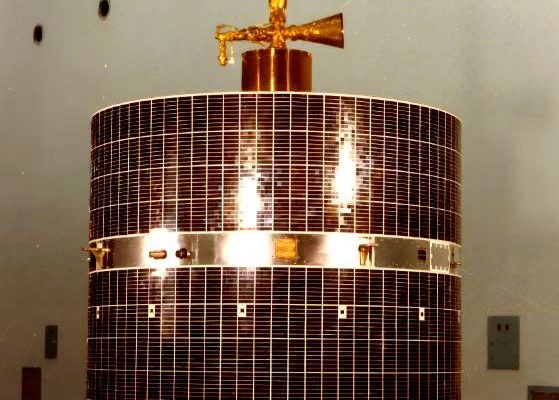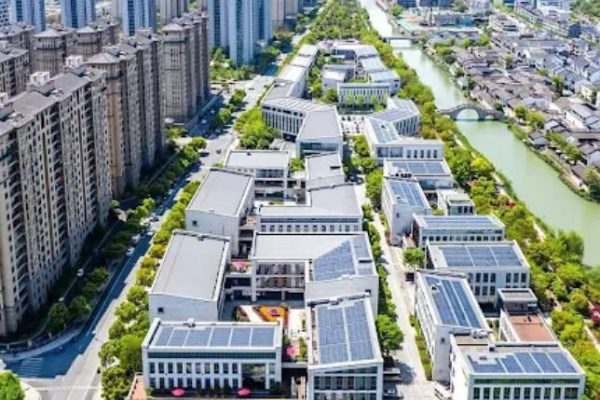How to Maintain Efficiency and Reliability All Year Round
Solar and energy storage systems are designed for long-term operation — often 10 to 20 years — but their performance varies with the seasons.
Changes in sunlight intensity, temperature, humidity, and grid demand all influence how a PV+Storage (Photovoltaic + Energy Storage) system behaves throughout the year.
For buyers, EPC contractors, and system integrators, understanding and preparing for these seasonal variations ensures stable output, optimized ROI, and extended equipment life.
This guide outlines key seasonal performance tips that help you keep solar and battery systems running efficiently — whether they’re in tropical, desert, or cold climates.
1. Why Seasonal Performance Planning Matters
Every solar + storage system faces environmental fluctuations that can reduce efficiency or even cause faults if ignored.
Common Seasonal Challenges:
- Summer: High temperature reduces PV module efficiency and battery cycle life.
- Winter: Shorter daylight hours and low temperature limit charge cycles.
- Rainy season: High humidity increases risk of corrosion or insulation leakage.
- Dry season: Dust accumulation lowers panel efficiency and inverter cooling.
Without proactive management, these changes can reduce system yield by 10–25% annually.
A good seasonal performance plan ensures consistent operation and builds buyer confidence in system reliability.
2. Spring: System Inspection and Recalibration
Spring is the best time for preventive maintenance before the heavy solar load of summer begins.
🔧 Recommended Actions:
- Clean PV panels after winter dust or pollen accumulation.
- Inspect cabling and junction boxes for moisture ingress from winter.
- Check inverter fans and cooling vents before rising temperatures.
- Run full EMS system diagnostics to recalibrate sensors and monitoring accuracy.
- Recheck battery terminal torque and perform BMS balancing.
📊 Why It Matters:
Proper preparation before summer ensures the inverter and BESS operate within safe thermal limits, preventing overheating or early derating.
3. Summer: Managing Heat and Peak Loads
Summer provides maximum sunlight — but also thermal stress on PV modules, inverters, and batteries.
☀️ Key Summer Challenges:
- PV efficiency drops 0.4–0.5% per °C above 25°C.
- Inverters reach derating thresholds faster.
- Battery degradation accelerates at high cell temperatures.
🧩 Action Plan:
- Enhance cooling and ventilation:
- Check airflow in inverter and battery cabinets.
- Clean intake filters and replace fans if necessary.
- Monitor battery temperature:
- Keep within 10–35°C (optimal for LFP).
- Add shade or sunroof if installed outdoors.
- Update EMS settings:
- Adjust charging/discharging schedules to align with higher daytime generation.
- Check SOC limits:
- Avoid long-term 100% SOC storage in heat, which stresses cells.
💡 Pro Tip:
Enable automated thermal alarms in your EMS/BMS — a key selling feature for overseas buyers in hot climates.
4. Autumn: Performance Review and Data Analysis
After peak generation season, autumn is ideal for performance evaluation and fine-tuning.
🍂 Key Tasks:
- Export generation and storage data for the past 6 months.
- Analyze battery degradation trend and SoH curve.
- Review inverter performance ratio (PR) and MPPT tracking efficiency.
- Clean panels after summer dust and insects.
- Inspect grounding and surge protection devices (SPD) before winter storms.
🧠 Why It Matters:
By comparing summer vs. spring performance, you can detect early signs of component aging or thermal stress — and correct before winter.
5. Winter: Cold-Weather Protection and Energy Balance
Winter presents the biggest challenge for PV+ESS systems in cold or high-latitude regions.
❄️ Common Issues:
- Reduced sunlight → lower generation hours.
- Low temperature → lower Li-ion discharge capacity.
- Snow accumulation on panels → shading losses.
⚙️ Solutions:
- Battery Warming Strategy:
- Use built-in heater plates or controlled charging cycles.
- Avoid charging below 0°C for LFP cells to prevent lithium plating.
- Panel Tilt Optimization:
- Adjust tilt angle for better snow shedding and sunlight capture.
- EMS Reprogramming:
- Shift load management to prioritize backup availability.
- Increase grid import threshold if hybrid.
- Inverter Protection:
- Ensure IP-rated enclosures and insulation integrity.
🧊 Note:
Temperature variation affects battery internal resistance. Monitoring SoC/voltage curves in winter is essential for maintaining efficiency.
6. Regional Seasonal Focus
Different climates require different seasonal strategies.
| Region | Main Concern | Seasonal Action |
|---|---|---|
| Tropical (Southeast Asia, Africa) | Heat, humidity, rain | Improve cabinet sealing, ventilation, and anti-corrosion coating |
| Desert (Middle East) | Dust, heat | Regular cleaning and high-temperature fans |
| Temperate (Europe, North America) | Snow, cold | Battery insulation, heater function |
| Coastal areas | Salt corrosion | Anti-corrosive enclosures, regular cleaning |
| High-altitude sites | UV and temperature swing | UV-resistant cables, flexible connectors |
Including such regional adaptation advice in your technical documentation increases trust among international buyers.
7. EMS Optimization per Season
The EMS (Energy Management System) is central to adapting performance automatically throughout the year.
Seasonal EMS Adjustments:
- Spring/Summer: Prioritize full battery charge during midday peak PV generation.
- Autumn: Reduce peak output limit to protect inverter lifespan.
- Winter: Shift schedule to favor load backup and lower discharge rates.
Recommended EMS Data to Track:
- Ambient and internal temperature
- PV generation curve
- Battery SoC / SoH
- Peak load demand per season
- Inverter output vs. efficiency trend
This data-driven approach allows predictive maintenance and performance tuning.
8. Maintenance Schedule by Season
| Season | Priority Tasks | Tools Required |
|---|---|---|
| Spring | Full inspection, torque checks, firmware update | IR thermometer, torque wrench |
| Summer | Cooling system test, SOC limit adjustment | EMS dashboard, airflow meter |
| Autumn | Cleaning, data analysis, grounding test | Multimeter, cleaning tools |
| Winter | Heater system test, tilt optimization | Insulation tester, inclinometer |
Providing this seasonal checklist in your manuals helps your clients standardize O&M.
9. Spare Parts and Seasonal Inventory Planning
During seasonal changes, some spare parts are in higher demand.
| Season | Spare Part | Reason |
|---|---|---|
| Summer | Cooling fans, filters | High temperature stress |
| Rainy season | Connectors, sealing rings | Moisture ingress |
| Winter | Battery heater modules | Cold-start risk |
| Year-round | Communication cables | Temperature expansion/contraction |
Including seasonal spare part kits in quotations improves your professional image and helps buyers plan logistics.
10. Communication Tips for Seasonal Guidance
Buyers appreciate ongoing technical advice after installation.
Consider sending quarterly seasonal tips via email or LinkedIn posts:
Example:
“Before the summer peak, check inverter cooling fans and ensure EMS temperature alarms are active. Consistent airflow improves inverter life by 20%.”
Such updates position your company as a technically reliable long-term partner, not just a supplier.
11. Designing for Seasonal Resilience
Even during the design stage, engineers can reduce seasonal performance loss:
- Use higher-efficiency panels with better temperature coefficients.
- Select LFP batteries with wider thermal range (–10°C to +55°C).
- Design modular BESS cabinets with passive ventilation.
- Include anti-condensation heaters in inverter rooms.
- Use UV-resistant and waterproof components for outdoor systems.
Systems designed for seasonal resilience have lower O&M costs and better warranty records — key selling points for export markets.
12. Case Example: Seasonal Adaptation in Hybrid System
Project: 200 kWh PV+ESS in Jordan Desert
Challenge:
Summer heat exceeding 48°C caused inverter derating and battery thermal alarms.
Solution:
- Added passive ventilation ducts and reflective cabinet coating.
- Adjusted EMS charging window to early morning hours.
- Set SoC limits to 20–85% to reduce stress during peak heat.
Result:
- Reduced battery temperature by 6°C average.
- Improved inverter uptime to 99.9%.
- System output stabilized year-round with minimal manual intervention.
13. Monitoring Seasonal Performance with Data
Modern EMS platforms allow real-time performance comparison between seasons.
Metrics to track quarterly:
- PR (Performance Ratio)
- Battery cycle count vs. temperature
- System yield (kWh/kWp)
- Fault frequency per month
- Downtime hours
Encourage buyers to review and archive seasonal reports — they help identify degradation trends early and maintain ROI consistency.
Seasonal changes are inevitable, but system performance loss is manageable — with planning, data, and proactive maintenance.
By implementing these seasonal performance strategies, you:
- Extend system lifespan
- Prevent overheating or cold-related faults
- Maintain consistent generation and storage output
- Build client trust through professional operation support
For global buyers, this kind of technical reliability is what turns a one-time purchase into a long-term partnership.
Because in the PV+Storage business, consistency across all seasons means credibility across all markets.









